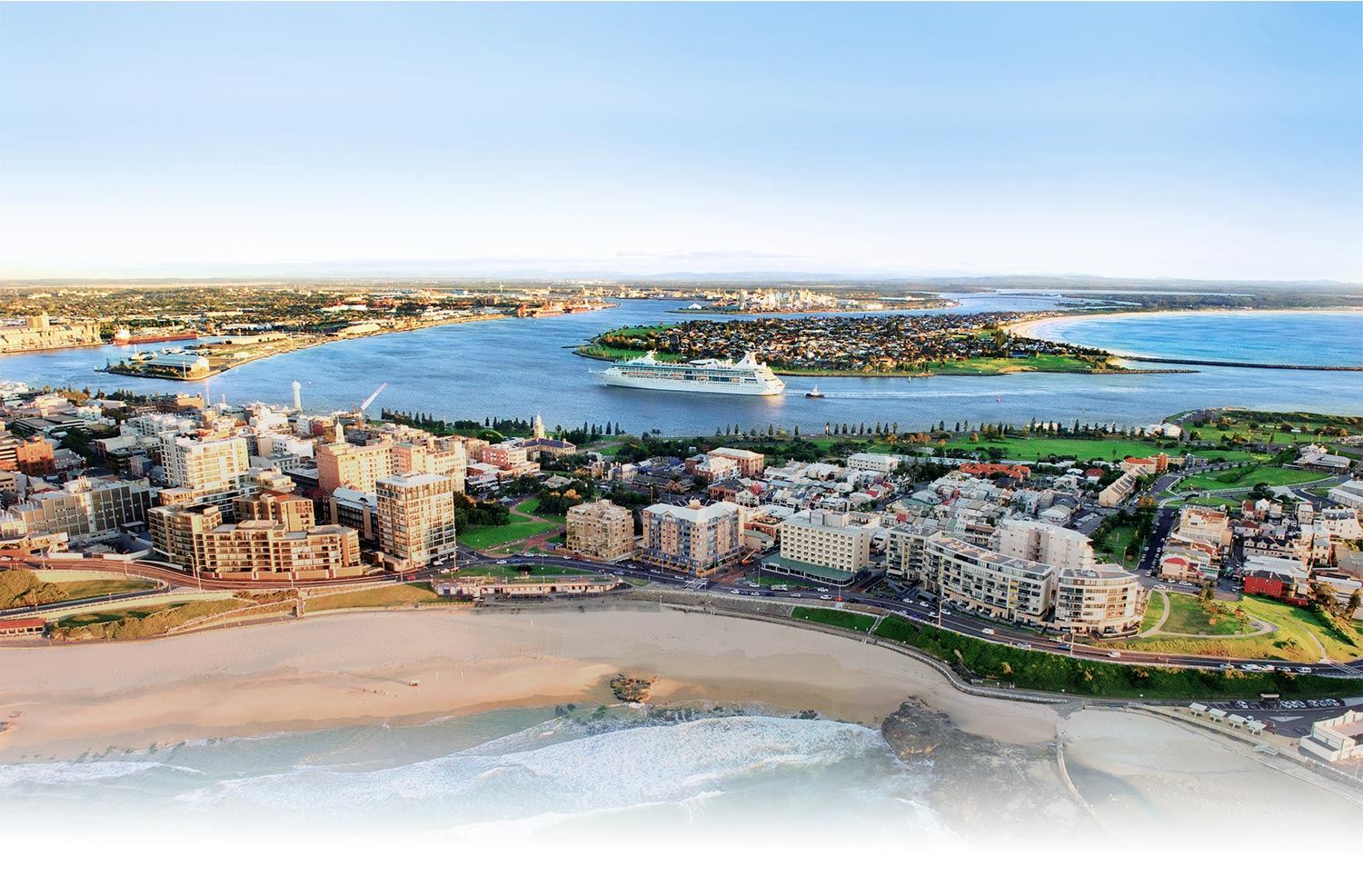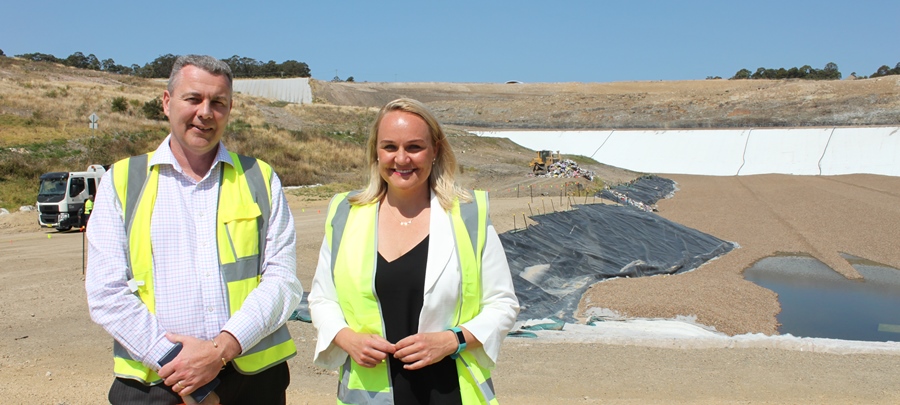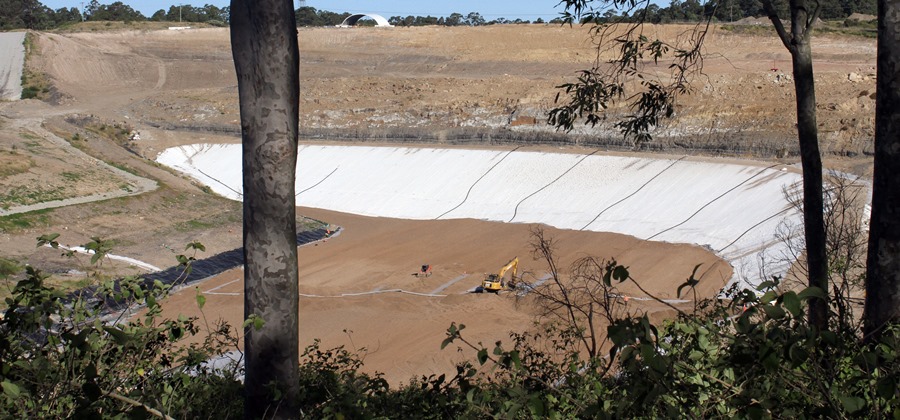
Landfill site evolving to minimise waste costs
21 Sept 2017
A new section of landfill at the Summerhill Waste Management Centre has begun receiving waste after significant investment by Newcastle City Council to meet the needs of the city's growing population.
Disposal operations transferred to the latest waste storage cell this morning following its excavation and water-tight insulation within the site's existing boundaries over the past two years.
To construct the 3 million cubic-metre cell - Summerhill's ninth - around 1.2 million cubic metres of earth was dug and a huge plastic membrane laid over compacted fill to prevent leaching into underlying rocks.
 NCC Waste Manager Darren North with Lord Mayor Nuatali Nelmes at Cell 9 as the first load of waste is pushed in.
NCC Waste Manager Darren North with Lord Mayor Nuatali Nelmes at Cell 9 as the first load of waste is pushed in.
Newcastle Lord Mayor Nuatali Nelmes said the $10.5 million project, approved by Council in December 2015, was the first stage of the Cell Nine development on 70 hectares allocated for landfill at Summerhill in 1993.
"I'm pleased to announce this significant operational milestone in one of our biggest tasks as a Council," the Lord Mayor said.
"Together with the solar farm we recently, it's the latest step we've taken to future proof our city for the population growth we can expect on the back of record development across Newcastle and the Hunter.
"Landfills today are highly engineered with multiple layers of protection to isolate waste, and Cell 9 incorporates the very best in modern technology, engineering and environmental protection."
As with previous cells, sediment basins and drainage berms were built to meet strict stormwater controls.
Each cell at Summerhill is constructed as part of a system that allows ease of access and optimises safety, with work on subsequent cells beginning before the previous one is filled.
Landfill is essential for the safe disposal of materials that can't be recycled for technological, environmental or economic reasons, says Newcastle City Council's Waste Manager Darren North.
"Landfill is only one of a suite of tools Council uses to manage waste, which also includes waste avoidance, re-use and recycling," Mr North said.
"We divert as much waste away from landfill as possible, because so much of what we throw away can be re-used, recycled or repurposed. Staff recover metals, garden, building and electronic waste, mattresses, paper and cardboard, and plastics for recycling.
"Last year we sent more 21,800 tonnes of materials for recycling. This is on top of 15,500 tonnes of kerbside yellow bin recycling and 27,000 tonnes of re-used soil."
 Cell Nine
Cell Nine
To reduce its environmental impact, Summerhill uses methane gas from landfills to power two electricity generators, which produced enough electricity to power 2,776 households in the last financial year.
Summerhill Waste Management Centre background
Landfill operations began in 1995 at SWMC, one of the largest facilities in the state with a capacity of more than 20 million tonnes.
The original conditions of the 1993 development consent allow for waste management activities within an area of 70 hectares.
Around 56 hectares remain free at Summerhill, where between 600 and 700 tonnes of waste arrive daily.
The conditions of approval were to expire in 2015 but a new approval removed the end date.
The annual waste limit was also increased to 364,000 tonnes from 220,000-tonnes.











